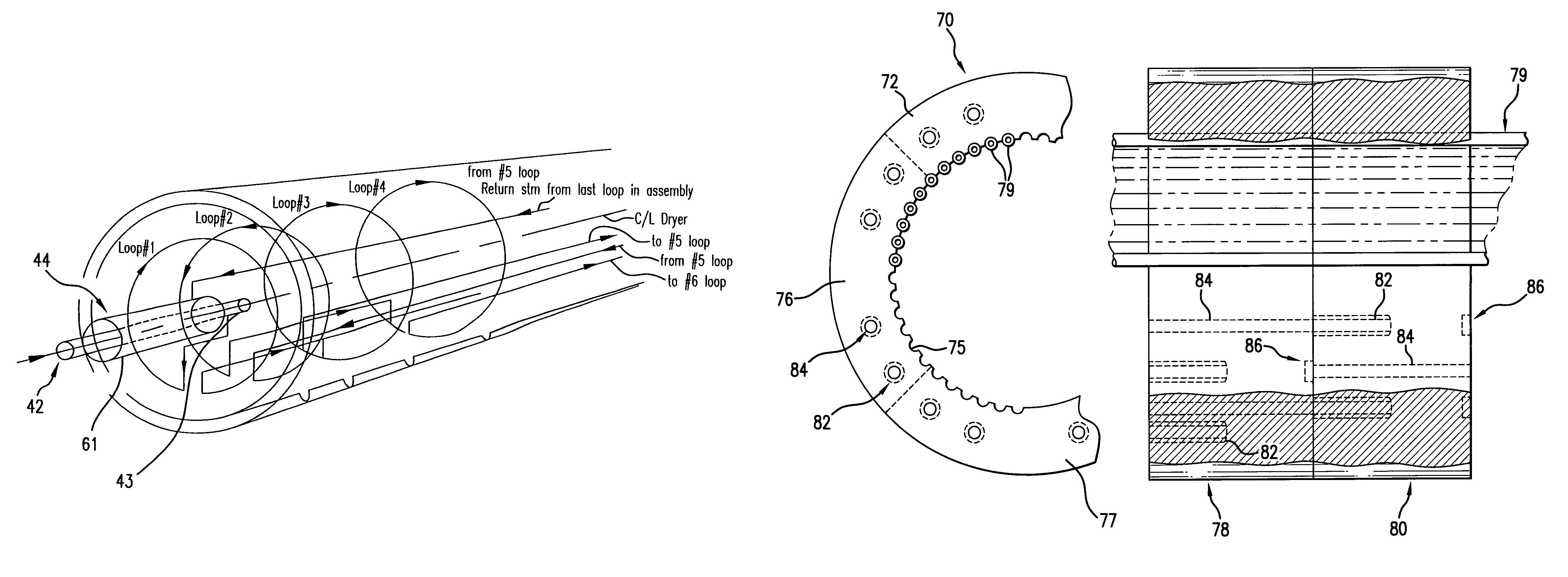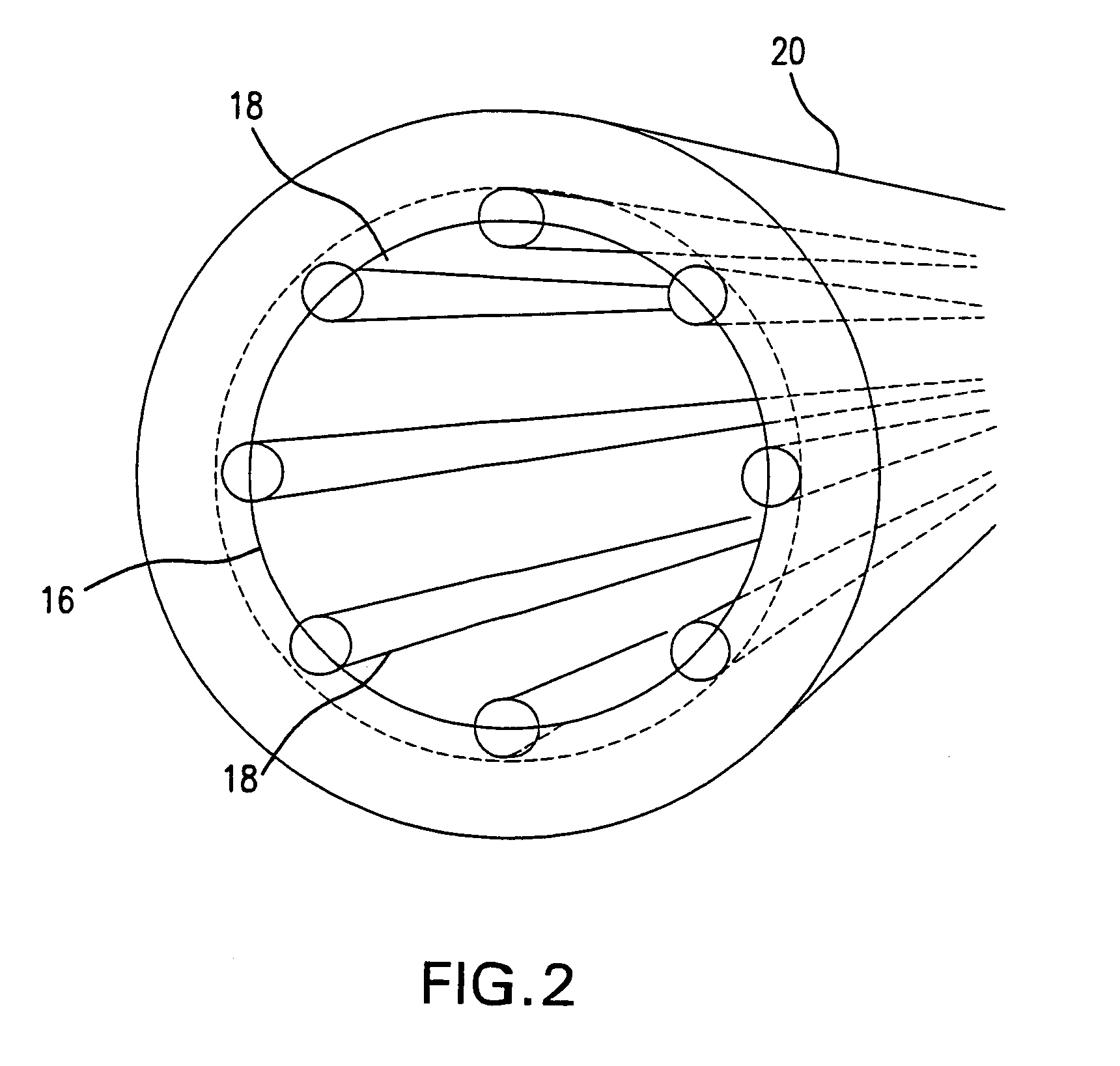Cylindrical dryer having conduits provided within a plurality of holding plates
a technology of holding plates and cylindrical dryers, which is applied in the direction of dryers with progressive movements, electric/magnetic/electromagnetic heating, lighting and heating apparatus, etc., can solve the problems of difficult and expensive transportation of the completed yankee dryer from a first location to a second location, and achieve the effect of efficient heat transfer
- Summary
- Abstract
- Description
- Claims
- Application Information
AI Technical Summary
Benefits of technology
Problems solved by technology
Method used
Image
Examples
Embodiment Construction
[0023]FIG. 1 shows a dryer 10 formed by a single shell 12 with a series of conduits 14 running along the length of the dryer. The dryer 10 is made of any suitable material, such as cast iron or stainless steel. These conduits 14 continuously carry a heating medium, such as steam, to heat the outside surface of the dryer, over which the paper web passes. By forming conduits within the shell, heat transfer occurs about the entire perimeter of the conduit, affording a maximum heat transfer surface. By way of example, a shell having a ¾ inch thickness can have conduits ¼ inch in diameter. The number of conduits is limited to maintain the shell's integrity.
[0024]An alternative arrangement shown in FIG. 2 forms grooves within the inner surface 16 of the shell and places conduits 18 within the groove. The grooves can have a depth equal to half the diameter of the conduits. A conduit inserted to a depth equal to its radius and placed side-to-side offers an increase of 54% in heat transfer s...
PUM
| Property | Measurement | Unit |
|---|---|---|
| thickness | aaaaa | aaaaa |
| pressure | aaaaa | aaaaa |
| length | aaaaa | aaaaa |
Abstract
Description
Claims
Application Information
 Login to View More
Login to View More - R&D
- Intellectual Property
- Life Sciences
- Materials
- Tech Scout
- Unparalleled Data Quality
- Higher Quality Content
- 60% Fewer Hallucinations
Browse by: Latest US Patents, China's latest patents, Technical Efficacy Thesaurus, Application Domain, Technology Topic, Popular Technical Reports.
© 2025 PatSnap. All rights reserved.Legal|Privacy policy|Modern Slavery Act Transparency Statement|Sitemap|About US| Contact US: help@patsnap.com



